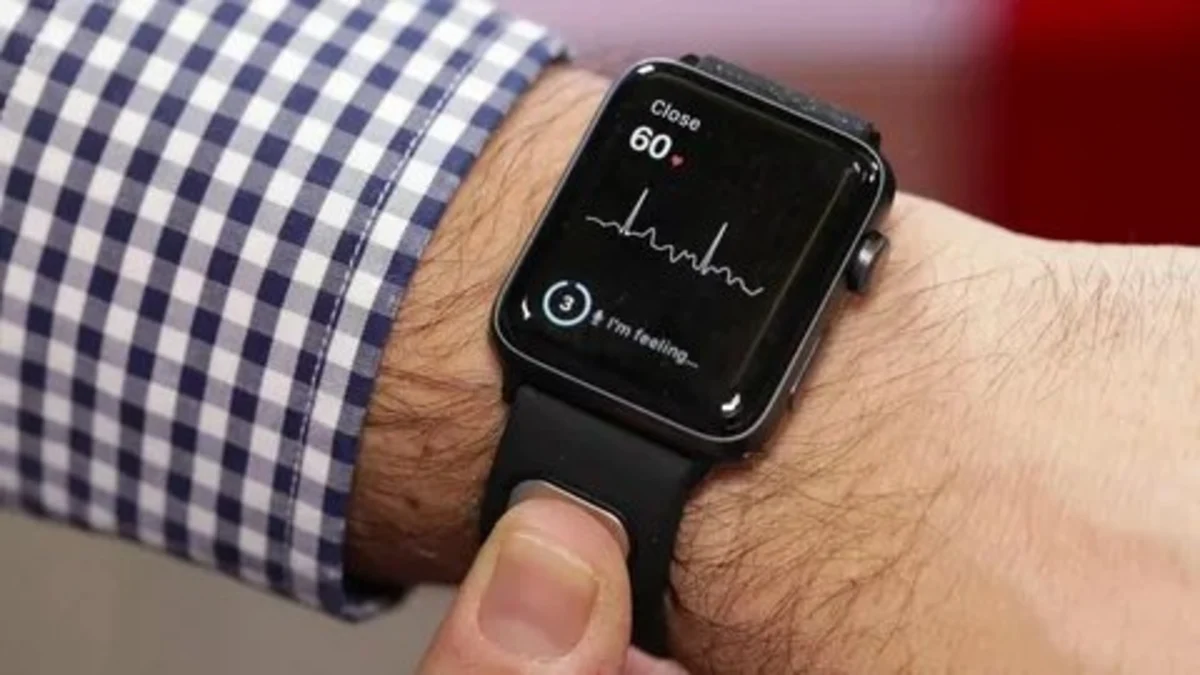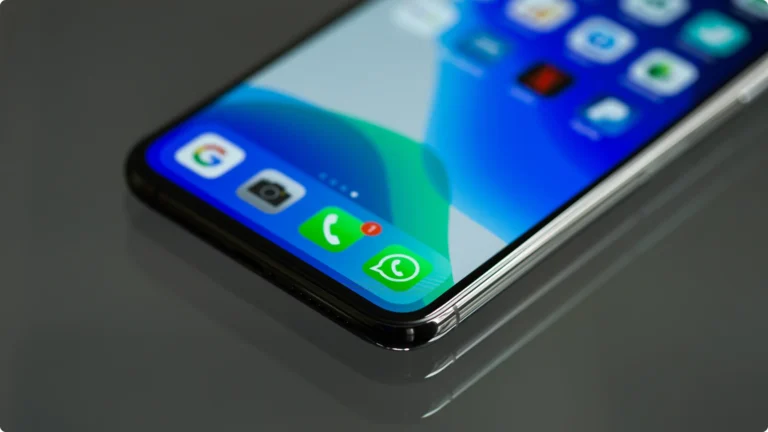SMART WATCHES MAKE HEART MONITORING SIMPLE FOR EVERYDAY PEOPLE Ever struggle to understand if your heart’s trying to tell you something? You’re sweating at the gym, feeling off during a meeting, or maybe just curious—what’s really going on inside your chest? Here’s the deal: most of us don’t have time to run to a healthcare …
Smart Watches Make Heart Monitoring Simple for Everyday People

SMART WATCHES MAKE HEART MONITORING SIMPLE FOR EVERYDAY PEOPLE
Ever struggle to understand if your heart’s trying to tell you something? You’re sweating at the gym, feeling off during a meeting, or maybe just curious—what’s really going on inside your chest?
Here’s the deal: most of us don’t have time to run to a healthcare provider every time our heart skips a beat. That’s why smartwatches are flipping the script. These aren’t just trendy wrist gadgets—they’re real-time health check-ins strapped to your arm.
Over the last few years, wearable technology has stopped being a luxury and has turned into a lifeline. With a smart watch with heart monitor, we’re not just tracking steps. We’re collecting serious health metrics that can detect conditions like atrial fibrillation (AFib) before they become dangerous.
From pushing notifications warning users about irregular pulses to syncing with apps that track long-term trends, smartwatches have shifted from nice-to-have to need-to-have. If you’re someone who values your health—or just wants to be one step ahead—this tech is worth a closer look.
Let’s dig into what’s really driving this revolution on your wrist.
The Rise Of Smart Watches With Heart Monitors
Wearables started as glorified pedometers. Fast forward a decade, and they’re collecting data that could rival a small clinic’s output. What changed?
We’re seeing a massive shift in how technology intersects with personal health. Smartwatches now come packed with sensors so advanced, they can measure the rhythm of your heart in real time—and send that data to your healthcare team.
This isn’t just impressive—it’s game-changing.
Modern smart watches with heart monitors are powered by optical heart rate sensors, accelerometers, gyroscopes, and machine learning algorithms. That combination translates ordinary movement into meaningful, real-world insights. These devices are more than accessories—they’re wellness companions.
The demand for this kind of always-on monitoring has exploded. According to market reports, 67% of smartwatch users lean into health and fitness features first. That means heart rate tracking, sleep validation, and cardio alerts aren’t just cool extras—they’re the main event.
And it’s not just the average Joe buying in. Over 80% of healthcare pros also believe wearables improve outcomes. These tools help them monitor patients from a distance, flag risk early, and personalize care for chronic conditions in a way that was stamina-sapping before now.
No need for check-ins, wires, or appointments. Just glance at your wrist.
Insights Into Wearable Technology And Its Role In Health Monitoring
So how do these gadgets know what’s going on beneath your skin?
Look at two critical technologies leading the charge: photoplethysmography (PPG) and electrocardiograms (ECGs). In simple terms, PPG uses tiny LED lights to measure changes in blood volume. Basically, your watch shines a light, and depending on how blood reflects that light, it calculates your pulse.
It’s kind of like echolocation, but for your heartbeat.
Then there’s ECG, which takes a more clinical approach. This tech tracks the heart’s electrical activity, giving you a rhythm readout that traditionally required a hospital room. Now? It fits into a stainless-steel bezel and syncs with your phone in seconds.
These innovations make it possible to extract real-time biometric data while jogging, during sleep, or even sitting at your desk. The result? Faster diagnoses. Better decisions. Healthier lives—all without stepping foot in a clinic.
According to a [systematic review of 18 studies](https://www.jmir.org/2021/8/e28974?utm_source=openai), smartwatches showed a sensitivity of 100% for detecting arrhythmias. That’s not a typo. These devices are nearly flawless at catching the stuff most of us never feel.
- They alert you if your pulse is irregular
- They sync to health apps for easy trend analysis
- They support AI-powered feedback for preventive care
And the reach is global. A massive study in China analyzed nearly 2.8 million smartwatch users, confirming AFib through traditional diagnostics in 93.8% of flagged cases. Numbers like that don’t just walk through the door—they crash the entire idea of what “monitoring” means in healthcare.
The lesson here? The wrist is the new front line of personal health defense.
Accurate Heart Monitoring Features: Challenges And Opportunities
Let’s not get carried away—these devices aren’t perfect.
As accurate as they can be, there’s one serious challenge: skin tone. Turns out, the same PPG sensors we count on to read pulse struggle a bit when melanin—natural skin pigment—absorbs more of that optical light.
That means people with darker skin tones may get less reliable readings. It’s a frustrating gap, but smart watch developers are aware of it, and they’re pushing hard to fix it.
They’re dialing in sensor calibration like engineers fine-tuning race cars:
| Challenge | Solution Being Explored |
|---|---|
| Signal Disruption in Darker Skin | Wider spectrum LEDs + machine learning compensation |
| Movement Interference | More advanced motion tracking with gyroscope sync |
| Sensor Placement | Optimized strap design + better wrist conformity |
Combine those upgrades with smarter algorithms, and the accuracy gap starts to close.
Take the Apple Heart Study, for example. It found that 84% of users who received an alert for irregular rhythms were later confirmed to have an issue—via ECG patches worn at home. That’s a clear win for consumer-grade wearables crossing into medical-grade territory.
And if you’re into fitness? These watches already track advanced metrics like VO2 max, recovery time, heart rate variability, and more. Whether you’re an athlete studying your endurance or a nurse monitoring patients remotely, the benefits are real:
– It’s passive—health data collects while you go about your day
– It’s portable—you don’t need to sit still or plug in
– It’s proactive—notifications catch issues before symptoms do
Bottom line? These aren’t Star Trek gimmicks. They’re credible health tools.
Programming Languages And Software Development For Health Tech
None of this happens by accident. Behind every high-tech feature is some serious software wizardry.
Developers are using a blend of programming languages—like Python for machine learning, Swift for iOS apps, and Java for Android interoperability—to bring health features to life. It takes more than flashy UIs. Health tech has to be reliable, efficient, and private.
Creating apps that measure and track heart rhythm, detect anomalies, and communicate with cloud services is complex and regulated. You’re not coding a meme app. You’re building the bridge between wearable tech and healthcare infrastructures.
Take Empatica’s Embrace smartwatch. It was built specifically to detect seizures in people with epilepsy. Not only does it monitor biometrics in real time, but it also triggers alerts to caregivers instantly whenever things look off. This isn’t just an app—it’s a lifeline.
Another interesting trend? Developers are embedding AI models into devices. These fed-up-the-sleeve algorithms learn patterns from your data, adjusting alerts to your unique baseline. That’s not just smart—that’s personalized medicine with a wristband.
In the end, software is what transforms a wearable from a toy into a tool.
The next chapter? Probably deeper AI integration and smoother backend pipelines that match patients with care teams in real time. Because let’s face it—health doesn’t wait.
Data Analysis and Optimization in Smart Watches
Ever wondered how your smart watch with heart monitor keeps up with your heart rate, stress levels, and even your sleep cycles without skipping a beat? A big part of the magic happens behind the scenes through real-time data processing and smart algorithms optimized for wearable tech.
Real-time data analytics: processing health metrics seamlessly
Smart watches today aren’t just ticking timepieces; they’re mini health hubs strapped to your wrist. The moment your heart skips a beat—literally—your watch is crunching numbers. Using built-in sensors like photoplethysmography (PPG), these devices capture your pulse and send the raw data straight into the watch’s processor.
This all happens in real time, so users get insights instantly. Whether you’re jogging, meditating, or grabbing your third cup of coffee, the watch continuously monitors shifts in your vitals, adjusting its analytics to offer real feedback without delay.
Smart watch algorithm optimization for heart rate tracking and fitness monitoring
Behind the smooth heart tracking display is a stack of finely tuned software. Developers are constantly refining algorithms to balance accuracy with battery life and data volume. That means shrinking down the power-hungry components and making code more efficient, so your heart rate updates instantly—without draining your battery by lunchtime.
- Adaptive sampling techniques focus processing power only when it’s needed—like during workouts or erratic rhythms.
- Fitness modes let the device tweak settings based on the activity selected, ensuring better data integrity whether you’re swimming or doing yoga.
Machine learning in wearables: improving recognition of arrhythmias and other metrics
Machine learning is the brainpower behind smarter health insights. By training on massive datasets—like those from the Apple Heart Study and the 2.8 million-participant Chinese AFib screening—algorithms now detect subtle health irregularities with remarkable precision.
These systems learn patterns in heart rhythm over time, which helps detect arrhythmias earlier. If your watch starts hitting you with irregular pulse alerts, it’s not guessing—it’s referencing thousands of similar cases.
As these models grow stronger, smart watches are moving from simple fitness companions to real-time medical sentinels. Not bad for something that used to just tell time.
Connected Health Tracking and Digital Well-Being
Ever feel like your tech knows more about your body than you do? That’s not paranoia—it’s connected health tracking in action. Your smart watch with heart monitor isn’t working alone anymore. It’s teaming up with your phone, your scale, and even your doctor to create a picture of your health in real time.
Exploring connected health tracking for holistic digital well-being solutions
Connected health is about linking wearables, apps, and cloud platforms to build something bigger than just step count. We’re talking full-circle wellbeing—from your heart rate to your hydration levels to your mood.
With constant syncing to health platforms like Apple Health, Google Fit or cloud-based patient portals, smart watches deliver a more complete view of well-being. This opens the door to early intervention and lifestyle nudges that can prevent bigger issues.
Mobile health monitoring solutions: empowering individuals with more control over their health
Remember the days when health checks meant waiting in line for hours? Now, with just a flick of your wrist, you can check your heart rate variability, calories burned, and even oxygen saturation.
That kind of power puts users in the driver’s seat. People with chronic illnesses, like arrhythmias or hypertension, can monitor critical issues on their schedule. Plus, some apps now auto-share vital stats with healthcare providers, making remote monitoring smoother than ever.
Integration of wearables with other smart devices for a seamless ecosystem
The smart watch isn’t flying solo anymore. It plays nicely with everything from your smartphone to smart scales, home assistants, and even your sleep-tracking mattress.
- Smart scales sync weight and BMI data to your fitness app, adding context to workouts and calorie tracking.
- Voice-enabled reminders from assistants like Alexa or Siri keep medication adherence on track.
- Sleep trackers and lights coordinate to optimize your circadian rhythms based on your watch’s input.
This ecosystem approach transforms your living room into a digital wellness space. No wires, no stress—just smart, connected health.
Consumer Electronics and Heart Monitoring: A Symbiotic Relationship
What happens when consumer tech meets clinical-grade health tools? You get smart watches with heart monitors that are reshaping both industries—and your morning routine.
The intersection of consumer electronics and health monitoring technology
At the core of this fusion is a marriage of design and diagnostic power. Slick, stylish, and tech-packed smart watches now double as real-time heart rate monitors. And it’s changing how both brands and buyers think about everyday gadgets.
Companies like Apple, Fitbit, Samsung, and Empatica are pushing consumer-grade devices into territory once ruled by hospital machines. Meanwhile, consumers are warming up to the idea that a watch could help catch something as serious as atrial fibrillation.
Features driving consumer interest in health-related wearables
So why are people picking a smart watch with heart monitor over a traditional fitness band or analog watch? It’s simple—function meets lifestyle.
- Heart rate and rhythm tracking during rest, exercise, or stress.
- Sleep quality reports that help refine bedtime habits.
- Fitness coaching, reminders, and dynamic goal setting—all without reaching for a phone.
These features now go beyond fitness freaks. Seniors, working professionals, and even kids are joining the curve, drawn to the ease of use and peace of mind a wearable offers.
Bridging consumer needs with professional-grade monitoring capabilities
Empatica’s Embrace watch raised the bar here—with seizure detection that can alert caregivers in moments. It opened the door to wearables being taken seriously in real medical communities.
Thanks to FDA-reviewed algorithms and validation in clinical trials, today’s smart watches aren’t just gadgets—they’re validated tools for managing real conditions. With better ECG sensors, optical readers, and machine-learned diagnostics, the gap between what consumers want and patients need is shrinking fast.
The Revolutionary Impact of Wearables on Fitness and Health
Let’s face it—fitness tech used to mean a pedometer in your sock drawer. Today, smart watches with heart monitor capabilities are not just trendy—they’re game-changers in personal health.
Why smart watches dominate the fitness monitoring space
Step counters are old news. Smart watches now offer a 360-degree view of your health. Whether you’re pumping iron or powering through Zoom calls, they adjust tracking in real time.
People love the clarity: “How did I sleep? How’s my stress? Did I really burn enough calories for that extra slice of pizza?” No guesswork—just stats.
Role of wearables in detecting and managing chronic conditions like heart disease
One of the biggest shifts? Moving from “nice-to-have” to “need-to-have” for people with cardiovascular risks. Studies show wearables are picking up early signs of heart disease, sometimes before symptoms show up.
Devices now detect irregular rhythm patterns that might indicate AFib—often confirmed later by clinical ECGs. That early heads-up can lead to interventions that save lives.
Real-world examples of life-saving features and user success stories
There are stacks of stories where a smartwatch buzz saved a life. Take the man in China whose notified rhythm alert led to early treatment for previously undetected AFib. Or countless Embrace users relying on real-time seizure alerts to notify family before an emergency escalates.
This isn’t tech for tech’s sake—this is meaningful impact. Wearables are moving from passive tracking to proactive care, nudging users toward better decisions, faster action, and safer lives.
Advanced Innovations in Sensor Technology and Integration
Ever questioned how a smart watch with heart monitor doesn’t just guess your heart rate but actually tracks it with shocking accuracy? It’s not magic — it’s precise sensor calibration. What’s tucked under the hood is complex, but the result is simple: real-time health data that makes sense without spending hours at a clinic.
Smartwatches use something called photoplethysmography (PPG). It sounds clunky but works like a charm. Light beams bounce off your skin (yes, really), and based on how that light reflects off blood flow, the watch picks up your pulse. To get this accurate consistently, sensors go through calibration — like aligning your car’s tires so you don’t drift. They factor in wrist anatomy, motion artifacts, even skin temperature to stay accurate during a hard workout or lazy Sunday binge session.
Now here’s the tricky part — skin tone. A recent study from the American College of Cardiology found that darker skin affects how light is absorbed. Translation: the tech works, but not always equally for everyone. Companies are being pushed to rethink sensor lighting, maybe even introduce multi-spectral options to avoid biased readings.
Where are we headed? Smarter syncing. We’re moving from “just tracking” to “getting insight.” Expect wearables to talk even more fluidly with your phone, your doctor’s dashboard, maybe even the fitness apps you already love.
Here’s what’s likely coming next for a smart watch with heart monitor:
- Multiple sensor fusion: Heart rate, body temp, blood oxygen… all working together, not in silos
- Open APIs: Meaning third-party apps can do custom stuff with your health data
- Context-aware alerts: Not just “high heart rate,” but “high, considering you’re chilling on the couch”
But here’s the elephant in the room — data privacy. Because when your smartwatch knows your heart rhythm patterns, that info’s valuable. Both to you… and potentially to insurers and hackers. The goal? Local processing. More manufacturers want raw data handled on-device where hackers can’t sniff around. Apple’s already doing this in part. Others will follow, or get left.
Bottom line: sensor smarts are only getting better. But trust — not just tech — is going to be the next real breakthrough.
Industry Trends: Where Wearables Are Headed
Let’s be real — most people didn’t drop serious cash on a smartwatch for fashion. It’s the features that win – particularly health ones. When it comes to smartwatches with heart monitors, the consumer tech world has lit a rocket… and we’re just getting airborne.
The most noticeable trend? Real-time health alerts. Not general feedback, but stuff that actually makes you pause mid-day. Like Apple’s Heart Study showing 34% of flagged users actually had AFib detected later on via ECG. That’s not hype — that’s clinical-level intervention triggered from your wrist.
Big brands, little-known startups, everyone’s racing to own the wrist. They’re turning watches into mini wellness coaches. We’re talking features that dig deeper than your number of steps. Sleep cycles. ECGs. Blood oxygen saturation. Some devices like the Embrace by Empatica even detect seizures — and that’s not consumer fluff, it’s being used in pharmaceutical trials.
What’s feeding this boom? Demand. People want feedback now. Not after their next doctor’s visit. The kicker: 80% of healthcare providers think these devices actually boost outcomes. And not just for gym rats — but seniors, patients with chronic illnesses, even kids.
Here’s what’s moving the wearable needle in the industry:
- Customization: Users don’t just accept defaults anymore. They tweak metrics, set thresholds, plug in third-party apps.
- Hybrid health platforms: Devices are syncing with patient portals, EHRs, and telemedicine hubs.
- Data-rich feedback: Instead of just saying “better sleep,” devices now explain why…and what next.
Leading the charge? Apple, no surprise. But don’t sleep on Garmin if you’re into rugged fitness, or Fitbit for wellness routines. Then there’s Chinese giants like Huawei and Xiaomi who’re pushing feature-rich options globally.
We’re not far from your smartwatch being smarter than your primary care doc — at least in terms of real-time vitals. It’s no longer a question of “if” these devices are game changers. We’re watching them rewrite the playbook.
Future Directions in Wearable Health Monitoring
Everyone’s talking about artificial intelligence like it’s this big crystal ball. But when it comes to a smart watch with heart monitor, AI’s already running the show — just behind the curtain.
Machine learning doesn’t just count your heartbeats. It spots patterns over time. It flags anomalies. And — deeper cut — it predicts where your vitals are heading based on behavior, sleep, and even stress signals. It’s like having a low-key cardiologist on your wrist, checking you without you asking.
Programming ecosystems are also leveling up. Instead of siloed apps, we’ll see next-gen SDKs (developer kits) that allow constant iteration. One tweak in code could now mean better diagnosis logic, more reliable alerts, smoother battery usage.
If you’re a dev, watch this space. The languages of choice? Expect Python for backend analytics, Rust for system-level enhancements, and Swift for native iOS integration. Edge computing’s not just hype — it’s reducing latency in healthcare insights by miles.
All this tech growth isn’t just a developer’s playground — it’s transforming society:
- Remote care scale-up: Through wearables, doctors can spot issues before they escalate — reducing ER visits.
- Preventive health redefined: Instead of treating illness reactively, wearables push us into the proactive lane.
- Better health literacy: People are learning what numbers like HRV and resting heart rate actually mean.
Here’s what I’m betting on: Within three years, your smartwatch will not just flag health issues — it’ll suggest tailored preventative measures. Nudge-based coaching backed by your own biodata. It’s already peeking through, but when AI gets deeper access and better training models, these devices will be more advisor than accessory.
End of the day, wearable health tech isn’t hype or hope — it’s here. And it’s just getting warmed up.






